
At first flush, the techniques you'd use for grilling and blackening meat might seem similar. Both methods use dry heat to add flavor to meat while sealing in the juices. But while blackening always involves a seasoning mix and intentionally flirts with the line between burned meat and meat that is simply done, grilling takes a more leisurely approach to cooking food.
Grilling Basics
Whether you use a hibachi, a gas grill or cook over wood, grilling relies on dry heat and any mixture of spices to cook meat or vegetables. With the meat resting on a grill or a grate during cooking, no oil is needed. A big factor in successful grilling is heating food to 300 to 500 degrees Fahrenheit so the Maillard reaction takes place. Coined by a French chemist of the same name, this reaction is responsible for the browning on meat's surface and the flavor boost that goes with it.
Blackened Seasoning Basics
Invented by Louisiana’s Chef Paul Prudhomme in the 1980s, blackening food is a two-part process that includes coating meat with butter and a special seasoning mix, then quickly cooking it in a cast-iron pan quickly over extremely high heat. The butter and spices quickly encase the meat, allowing the interior to cook in moist steam. You can buy a blackening mix in the grocery store, but look for one that includes Chef Prudhomme’s basic ingredients of paprika, salt, pepper, onion and garlic powders, cayenne, thyme and oregano. Although meat is typically blackened, inventive cooks have also used the technique with tofu, french fries and vegetables.
Grilling Techniques
Whether you marinate meat first, or just toss it on the grate, grilling seals in the juices and changes the flavor. Unlike blackened meat -- which needs to be cut thinly to ensure doneness -- almost any size of meat can be used. Steaks, chops, burgers and whole chickens or turkeys, can be roasted on a grill. All types of rubs and seasoning combinations can be used on grilled meat before roasting. A classic barbecue rub can be made with sugar, salt, cumin, chili powder and cayenne. For an herb-inspired rub, mix together sage, fennel seeds and rosemary.
Blackening Technique
Blackened meat needs a distinct cooking technique and special seasoning rub to get the spicy-sweet, smoky flavor it is known for. Put a cast-iron pan on a burner turned to its highest setting. Once the pan reaches 500 to 600 F -- which takes roughly 10 minutes -- the meat is dipped in melted butter, lightly seasoned with blackening mixture and gingerly placed in the unoiled pan. The ideal meat is only 1/2 to 3/4 inch thick, and cooking takes roughly two minutes per side. It creates a fair amount of smoke in the kitchen and in a quantity that quickly overwhelms a typical kitchen exhaust fan.
Related Articles

How to Use Wood Chips in a Smoker
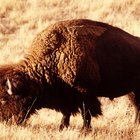
The Best Way to Prepare Bison Sirloin

Difference Between Hibachi & Teriyaki

How to Cook Bear Steaks

How to Cook With a Brinkmann Barrel ...
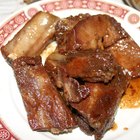
How to Grill Ribs on a Charcoal Grill

The Difference Between Grilled & ...

Instructions for an Emeril Cast-Iron ...
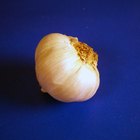
How to Blacken Steaks

Cooking Jamaican Jerk Catfish

How to Reuse Cedar Cooking Planks

The Difference Between Grill & Griddle

How to Season Granite Grill Cooking ...
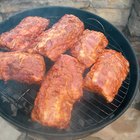
How to Smoke Ribs With a Gas Smoker
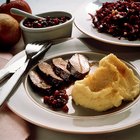
How to Make a Venison Rub

How to Make Pan-Seared Baked Steak

How to Cook Steak on a Baking Sheet

How to Cook Bison Burger
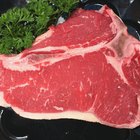
Ways to Cook T-Bones Indoors
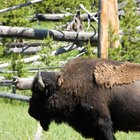
How to Smoke Buffalo Meat
References
Resources
Writer Bio
Suzanna Didier's work appears in online publications including the National Geographic website, SFGate and Local.com. She is an avid cook who lives on a hobby farm, direct-markets organic produce to local restaurants and has taught at the preschool, elementary and college levels. Didier holds a Master of Arts in education from the University of Oregon.
Photo Credits
Jupiterimages/liquidlibrary/Getty Images